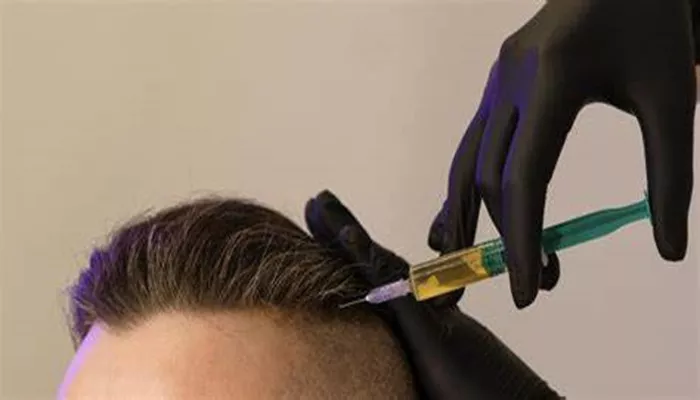Hair loss is a common concern that affects millions of people worldwide, regardless of age or gender. Whether it’s due to genetics, hormonal changes, stress, or medical conditions, losing hair can be distressing and impact self-confidence. Fortunately, there are numerous treatment options available, ranging from over-the-counter products to advanced surgical procedures. However, the cost of these treatments varies widely, depending on the method, duration, and severity of hair loss.
In this article, we will explore the different hair loss treatments available, their effectiveness, and the associated costs. By understanding the financial investment required, you can make an informed decision about the best approach for your needs and budget.
Understanding Hair Loss and Its Causes
Before diving into treatment costs, it’s essential to understand why hair loss occurs. Hair loss, or alopecia, can result from multiple factors, including:
-
Androgenetic Alopecia (Male/Female Pattern Baldness): The most common cause, driven by genetics and hormones like dihydrotestosterone (DHT).
-
Telogen Effluvium: Temporary shedding due to stress, illness, or nutritional deficiencies.
-
Alopecia Areata: An autoimmune disorder causing patchy hair loss.
-
Medical Conditions: Thyroid disorders, scalp infections, or chronic illnesses.
-
Lifestyle Factors: Poor diet, excessive styling, or harsh hair treatments.
Identifying the root cause is crucial because it determines the most effective treatment. A dermatologist or trichologist can help diagnose the issue and recommend appropriate solutions.
Over-the-Counter (OTC) Treatments
For those experiencing mild to moderate hair loss, over-the-counter treatments are often the first line of defense. These options are relatively affordable and easily accessible.
Minoxidil (Rogaine)
Minoxidil is a topical solution approved by the FDA for treating androgenetic alopecia. It works by prolonging the hair growth phase and increasing blood flow to hair follicles.
Cost:
- Generic minoxidil (5% solution): 15–30 per month.
- Brand-name Rogaine: 30–50 per month.
Effectiveness: Visible results after 4–6 months of consistent use.
Side Effects: Scalp irritation, unwanted facial hair growth (in some cases).
Ketoconazole Shampoo (Nizoral)
Ketoconazole is an antifungal shampoo that may help reduce hair loss by combating scalp inflammation and DHT production.
- Cost: 10–20 per bottle (lasts 1–2 months).
- Effectiveness: Best used alongside other treatments like minoxidil.
Biotin and Other Supplements
Nutritional deficiencies can contribute to hair thinning. Supplements like biotin, iron, and vitamin D may help improve hair health.
Cost: 10–30 per month.
Effectiveness: Varies; works best for those with deficiencies.
While OTC treatments are budget-friendly, they require long-term use and may not work for everyone.
Prescription Medications
For more severe hair loss, doctors may prescribe stronger medications.
Finasteride (Propecia)
Finasteride is an oral medication that blocks DHT, slowing hair loss and promoting regrowth in men.
Cost:
- Generic finasteride: 20–50 per month.
- Brand-name Propecia: 70–100 per month.
Effectiveness: Significant improvement in 6–12 months.
Side Effects: Rare but may include sexual dysfunction.
Dutasteride (Avodart)
Similar to finasteride but more potent, dutasteride is sometimes used off-label for hair loss.
Cost: 50–100 per month.
Effectiveness: More effective for some patients, but not FDA-approved for hair loss.
Spironolactone (For Women)
This anti-androgen medication helps women with hormonal hair loss.
Cost: 10–50 per month.
Effectiveness: Reduces shedding over several months.
Prescription drugs can be highly effective but require ongoing use and medical supervision.
Advanced Non-Surgical Treatments
If medications aren’t enough, several clinical procedures can stimulate hair growth.
Low-Level Laser Therapy (LLLT)
LLLT devices, such as laser caps or combs, use red light to stimulate hair follicles.
Cost:
- In-office sessions: 100–300 per session (6–12 sessions recommended).
- At-home devices: 200–1,000 (one-time purchase).
Effectiveness: Moderate; works best in early-stage hair loss.
Platelet-Rich Plasma (PRP) Therapy
PRP involves injecting concentrated platelets from your blood into the scalp to promote hair growth.
Cost: 500–2,500 per session (3–6 sessions initially, then maintenance).
Effectiveness: Varies; some see noticeable improvement.
Microneedling
This technique uses tiny needles to create micro-injuries, stimulating collagen and hair growth.
Cost: 100–500 per session (multiple sessions needed).
Effectiveness: Enhanced when combined with PRP or minoxidil.
These treatments are more expensive than OTC options but offer better results for some individuals.
Hair Transplant Surgery
For permanent hair restoration, surgical options are the most effective but also the most costly.
Follicular Unit Transplantation (FUT)
FUT involves removing a strip of scalp and transplanting individual follicles.
Cost: 4,000–15,000 (depending on grafts needed).
Recovery: Longer healing time, linear scar.
Follicular Unit Extraction (FUE)
FUE extracts individual follicles, leaving minimal scarring.
Cost: 5,000–20,000.
Recovery: Faster than FUT, less noticeable scarring.
Robotic Hair Transplants
Advanced FUE procedures using robotic technology for precision.
Cost: 10,000–30,000.
Hair transplants provide natural-looking, permanent results but require significant investment.
Alternative and Natural Remedies
Some people prefer natural or holistic approaches, though scientific evidence is limited.
Essential Oils (Rosemary, Peppermint): 10–30 per bottle.
Scalp Massage: Free or with tools (10–50).
Herbal Supplements (Saw Palmetto): 10–30 per month.
While affordable, these methods may only show subtle improvements.
Factors Affecting Hair Loss Treatment Costs
Several variables influence the total expense:
Severity of Hair Loss: More advanced cases require pricier treatments.
Geographic Location: Clinics in major cities charge more.
Provider Expertise: Experienced surgeons cost more but yield better results.
Maintenance Needs: Medications and follow-ups add to long-term costs.
Insurance Coverage for Hair Loss Treatments
Most insurance plans consider hair loss treatments cosmetic and do not cover them. However, if hair loss is due to a medical condition (e.g., alopecia areata), partial coverage may apply.
Conclusion
The cost of hair loss treatment varies from a few dollars per month for OTC products to tens of thousands for surgical solutions. The best approach depends on your budget, hair loss stage, and desired results. Consulting a specialist ensures you choose the most effective and cost-efficient option.
Investing in hair restoration is not just about aesthetics—it’s about confidence and well-being. By understanding the costs and benefits, you can take the first step toward reclaiming a fuller, healthier head of hair.
Related Topics:
- How to Stop Hair Fall Due to Medication
- How to Stop Hair Thinning at the Crown
- Is Vitamin D3 Good for Hair Growth?


